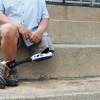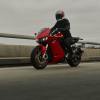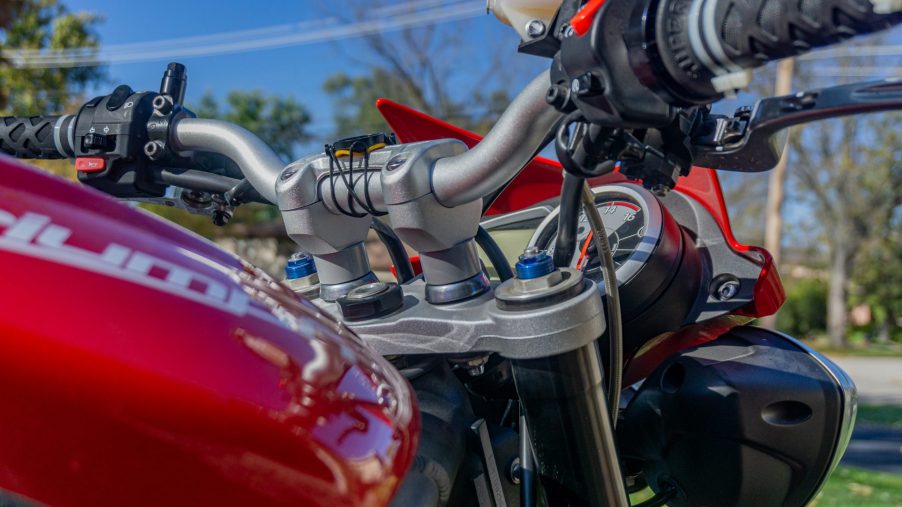
Want More Comfort on Long Rides? Get Some Handlebar Risers
Adding heated grips or installing a windshield might be some of the most obvious comfort-oriented bike mods, but they’re not the only ones. After all, some motorcycle riding problems are less about wind chill than they are about numbness, cramping, and general aches. With some bikes, it’s an inevitable consequence of style and/or handling. However, that doesn’t mean you have to ride in perpetual discomfort. And one subtle and inexpensive way of addressing the problem, as I recently did, is to install some motorcycle handlebar risers.
Handlebar risers aren’t just for off-road motorcycles
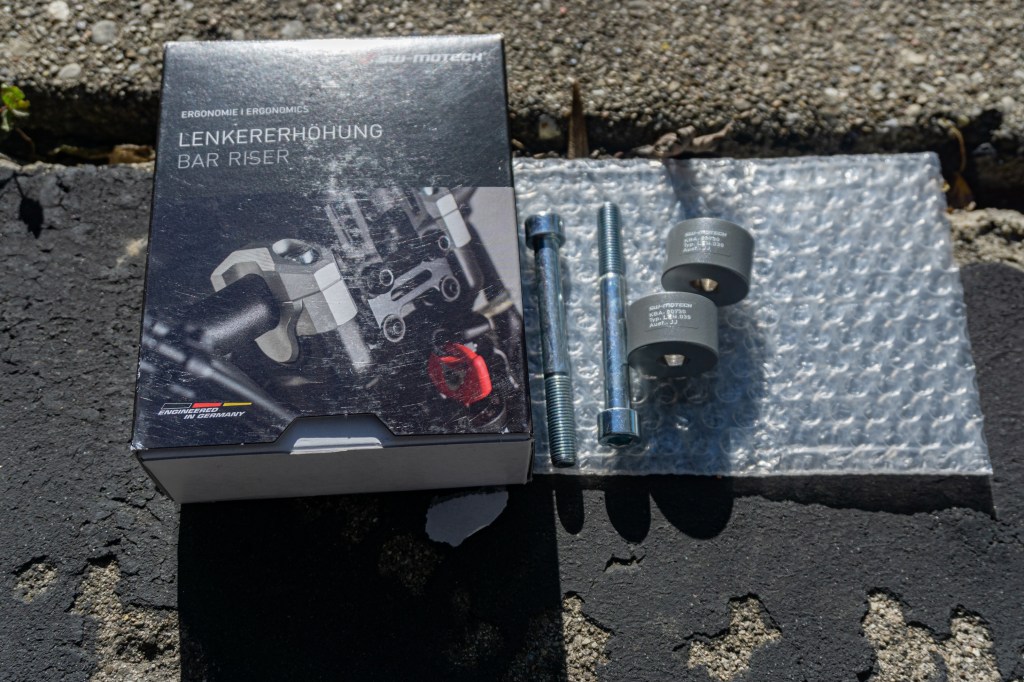
Anyone who’s spent a significant amount of time off-roading motorcycles is likely familiar with handlebar risers. Some high-end adventure and dual-sport bikes even have adjustable risers for reasons we’ll get into shortly. However, they’re also a common sight on custom choppers, and some companies offer riser clip-on bars for sportier machines.
So, what exactly are they? Risers fit between the top of your motorcycle’s fork and its handlebars. And as their name suggests, these parts raise the handlebars, which often puts them closer to the rider, too. They’re available in a wide variety of heights, shapes, and materials, and are either bike-specific or universal-fit. But regardless of their design, they have the same function.
While some riders fit risers to modify their motorcycle’s aesthetics, these parts are usually installed for practical reasons. They’re vital for off-roaders because riding in dirt, sand, and mud often means standing on the pegs. That leaves the handlebars out of reach for all but the gangliest riders—unless they fit some risers, RideApart notes. And with adjustable risers, riders get an off-road-friendly position without sacrificing street comfort.
Speaking of street comfort, that’s the biggest reason why riders install handlebar risers. Anyone who’s ridden a sportbike for an extended period knows that the low bars, while great for handling, put pressure on your wrists. That’s fine for short blasts, but not if you’re going long-distance. But even if your handlebars don’t cause wrist pressure, they can strain on other muscles, joints, and ligaments in your hands, arms, back, and shoulders due to a poor riding position.
And after repeatedly experiencing a tingling, uncomfortable numbness in my right hand on my Triumph Street Triple R, I decided to do something about it.
How to install handlebar risers on your motorcycles
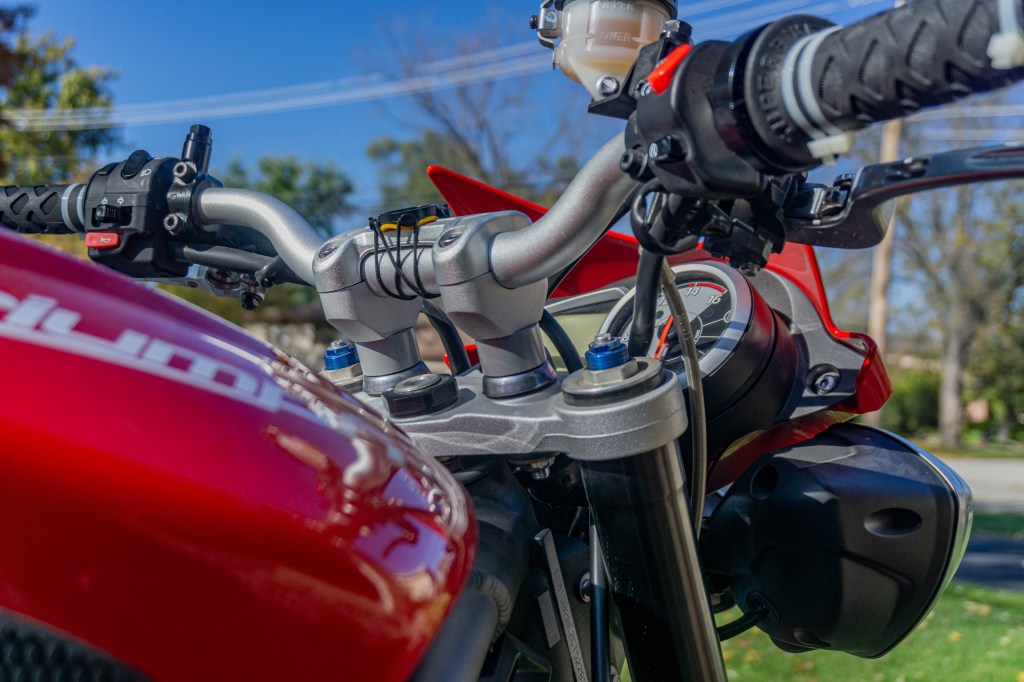
Admittedly, I didn’t jump straight to handlebar risers to fix my Street Triple issue. Tank grips helped a ton, as did changing how I gripped the throttle. But even after relaxing my former death grip, adjusting the handlebars, and changing grips, neither the numbness nor the slight wrist pressure truly disappeared.
Some of these issues stem from the 2012 Street Triple R’s Daytona 675 sportbike roots. But after reading some owner forums and experiencing no discomfort on the 2022 FTR S’s wide handlebars, I decided to give risers a try. Luckily, SW-MOTECH’s bike-specific 20mm risers only cost me about $70.
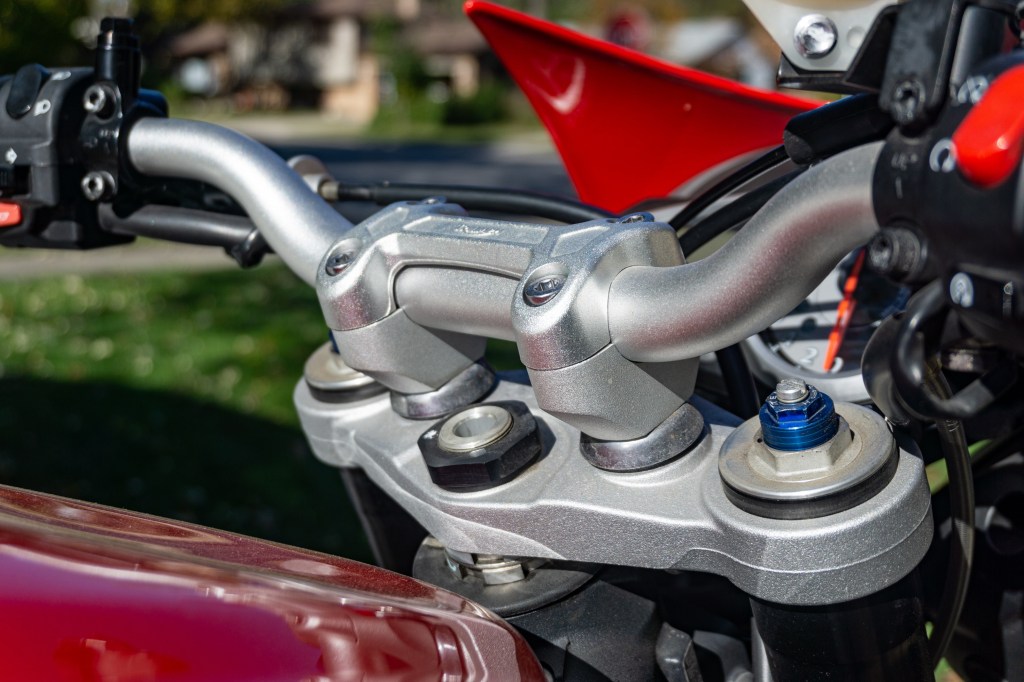
Stock 2012 Triumph Street Triple R handlebar position 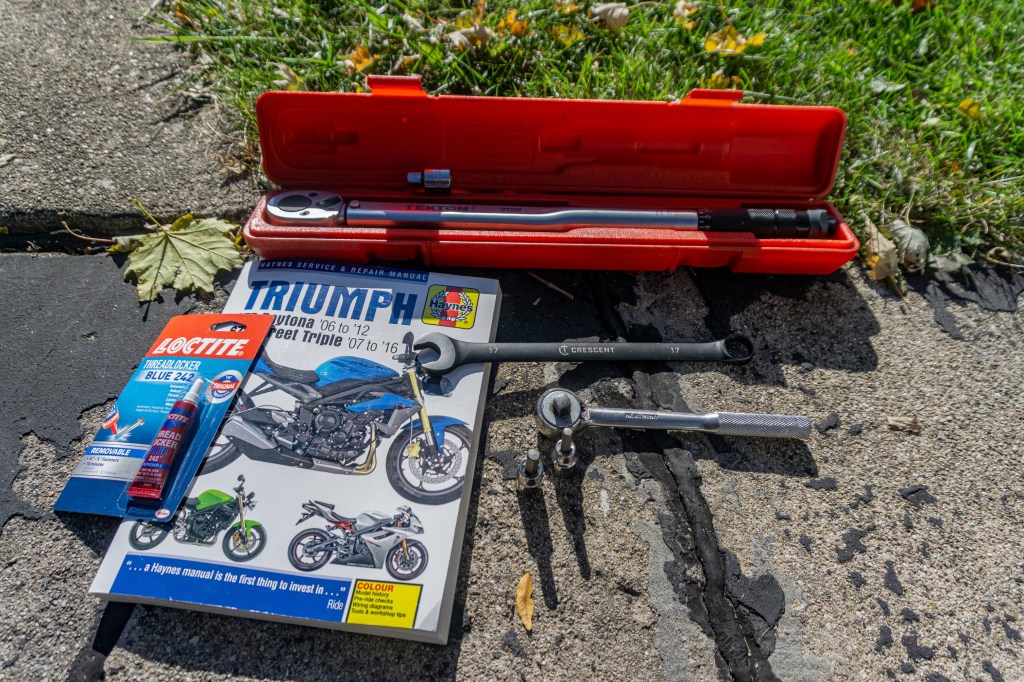
2012 Triumph Street Triple R handlebar riser installation tools 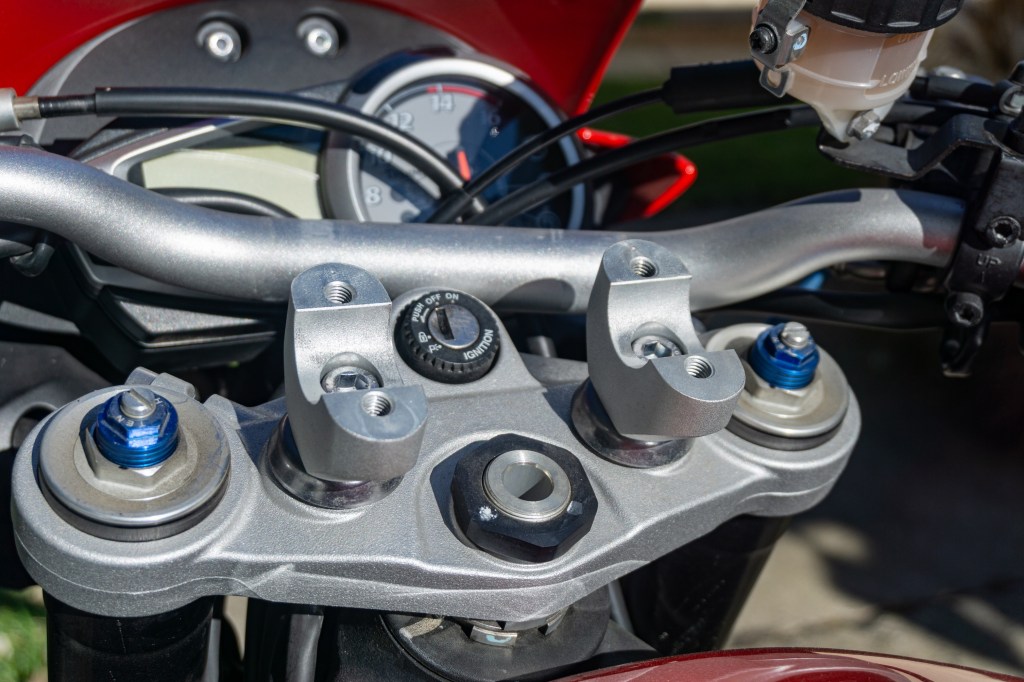
Handlebar mounts on a 2012 Triumph Street Triple R with bar removed 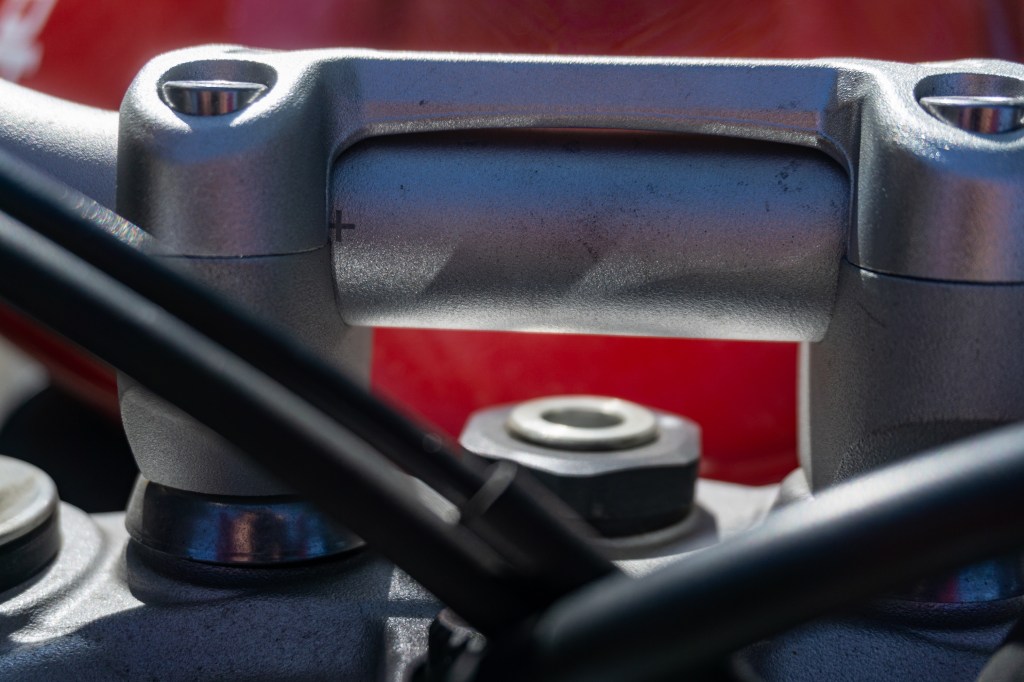
2012 Triumph Street Triple R handlebar alignment mark
Since my 2012 Street Triple has a flat bar, rather than clip-ons, installing the risers was pretty straightforward. SW-MOTECH provides longer-length screws with its risers, meaning the only additional item I needed was some blue thread-locker. And the only tools I needed were a torque wrench, socket wrench, combination wrench, and some bungee cords.
First, I loosened the handlebar clamp and secured the bar—with controls and brake-fluid container—to the bike. Next, I removed the screws holding the stock handlebar mounts in place. Then, I simply put the risers on, reinstalled the handlebar mounts, and screwed both in place using the provided longer screws. I used the combination wrench to hold the nuts and washers in place while I tightened the screws to the required torque.
Next, I reinstalled the handlebar and clamp, adding some blue thread-locker to the original clamp screws. After that, I made sure the handlebar’s alignment mark was in the correct spot (which it wasn’t in the photos) and tightened the screws to the correct torque. Finally, since I adjusted my handlebar position, I adjusted my throttle and clutch cable slack.
Are they worth it?
Although handlebar risers don’t change your motorcycle’s chassis geometry, they do change the bars’ position relative to the forks and wheels. So, they change the torque you put on the bike’s center of gravity. As a result, with the risers on my Street Triple feels a little heavier and harder to move with its engine off. And it takes slightly more effort to countersteer.
However, these risers haven’t ‘ruined’ my motorcycle’s handling by any means. And the comfort benefits more than make up for the negligible handling changes. The handlebar risers eliminated the remaining wrist pressure and the tingling numbness in my right hand. My Street Triple R is still fun to ride on twisty roads, but it’s now easier to commute on in stop-and-go traffic.
As with any modification, your results may vary. And while risers aren’t terribly expensive, adjusting your motorcycle’s handlebars first might fix your discomfort for free. However, if that doesn’t work, I wholeheartedly suggest giving handlebar risers a try. And hopefully, I’ll see you on the road in the spring.
Follow more updates from MotorBiscuit on our Facebook page.
